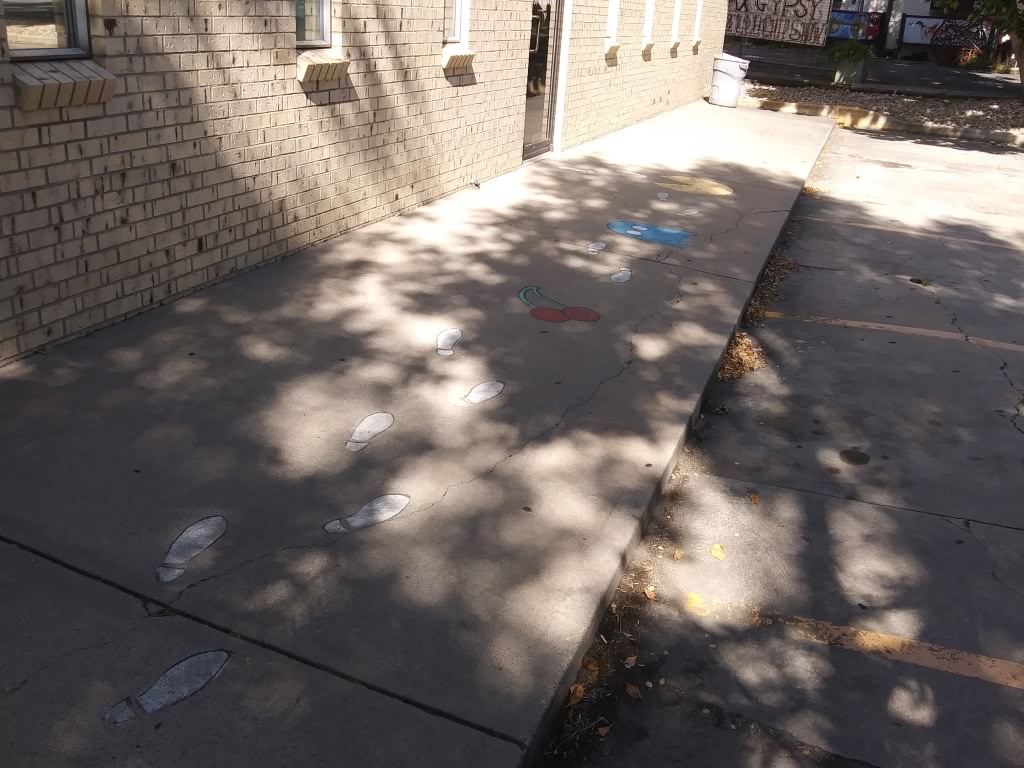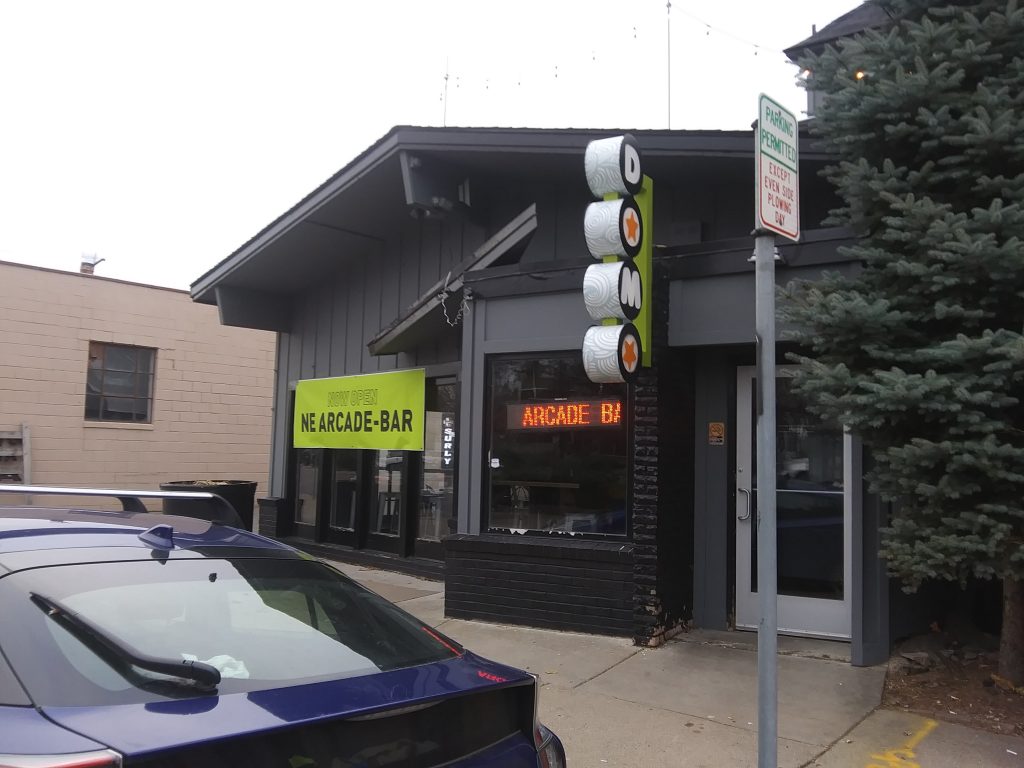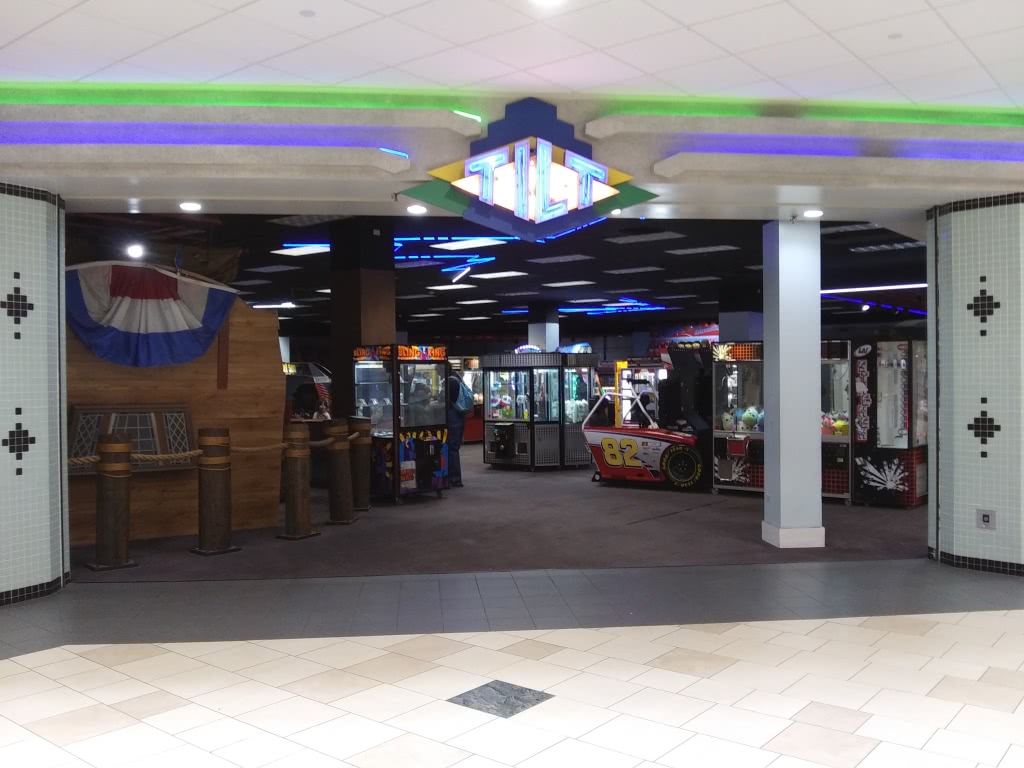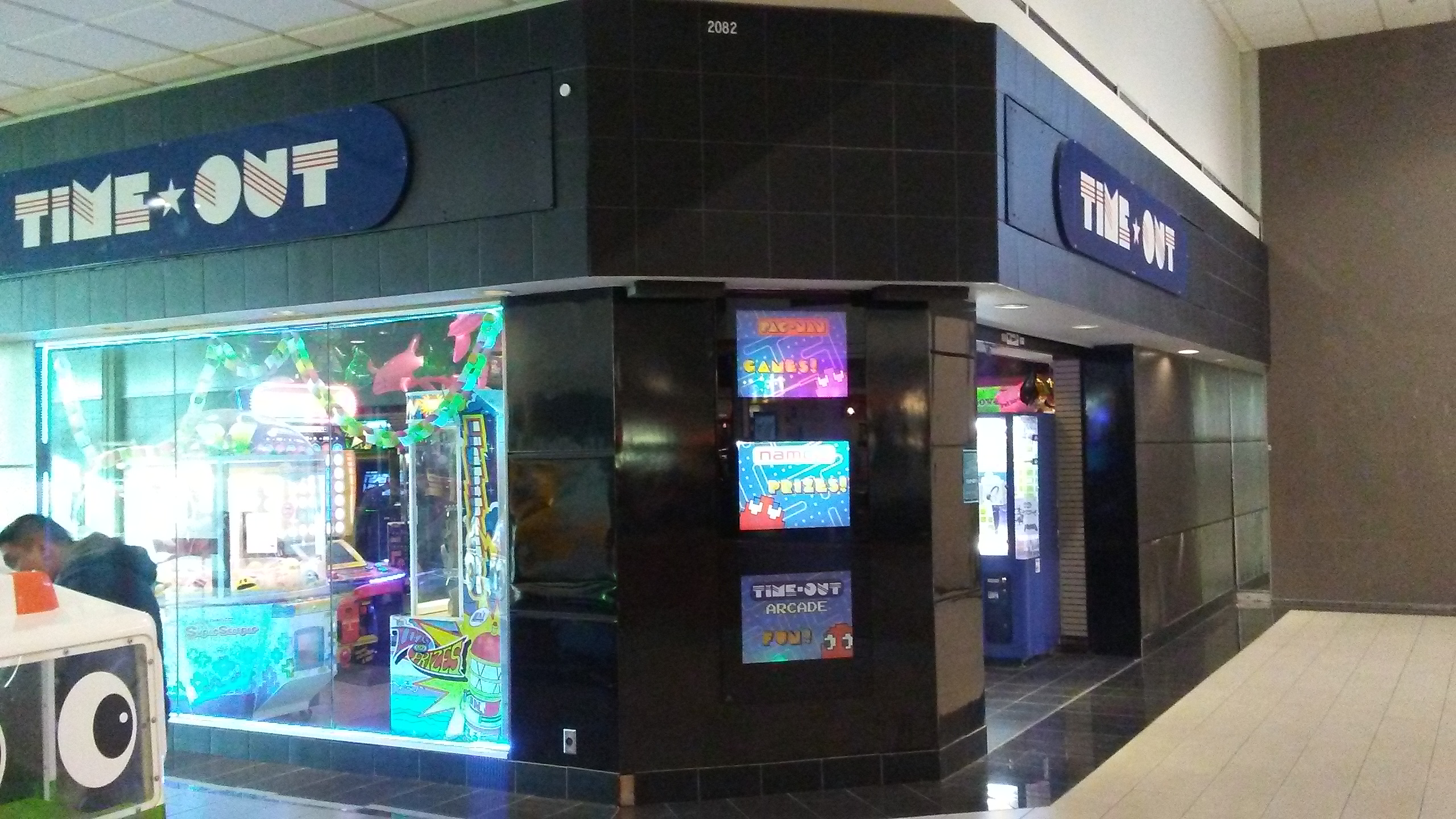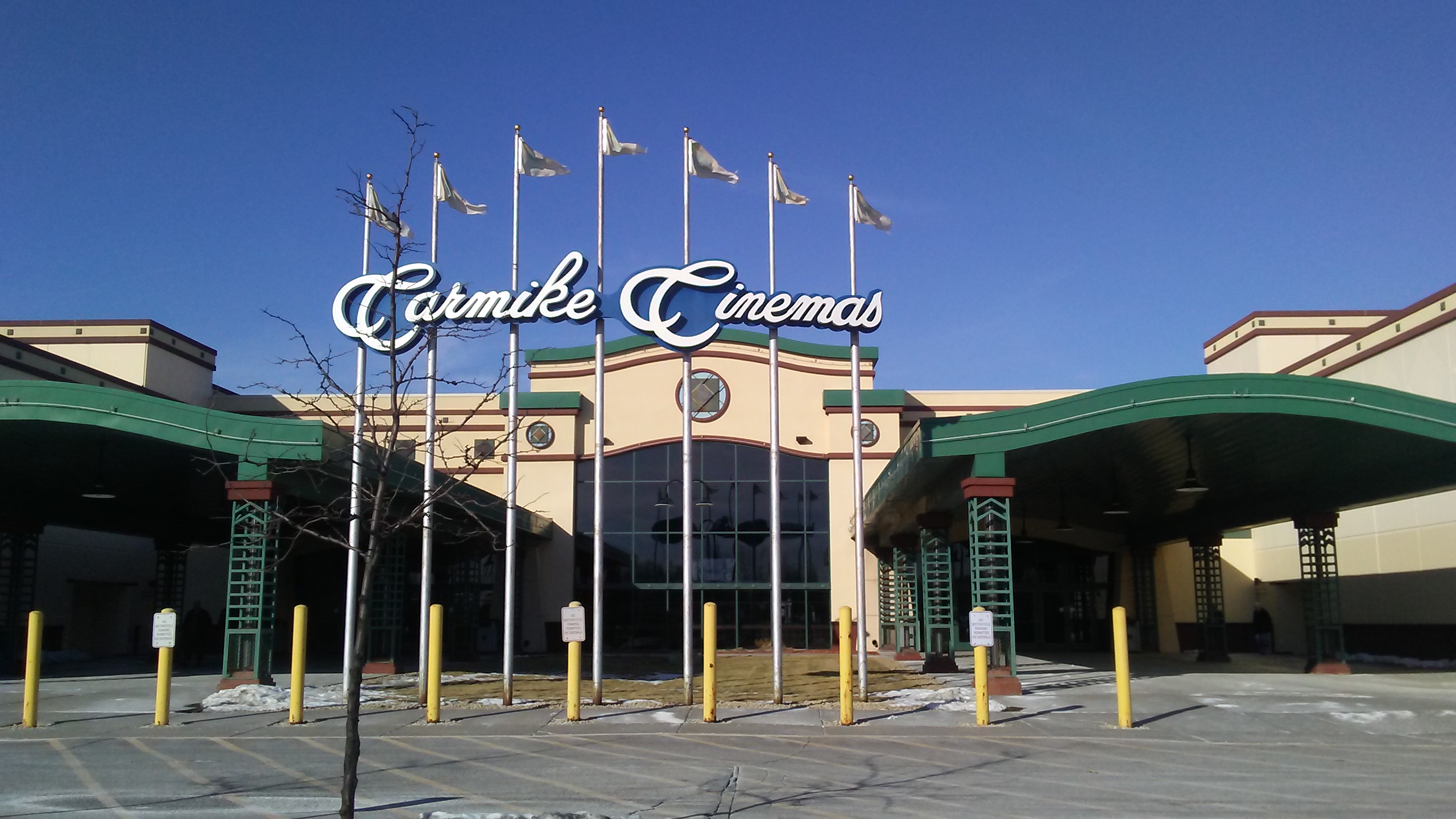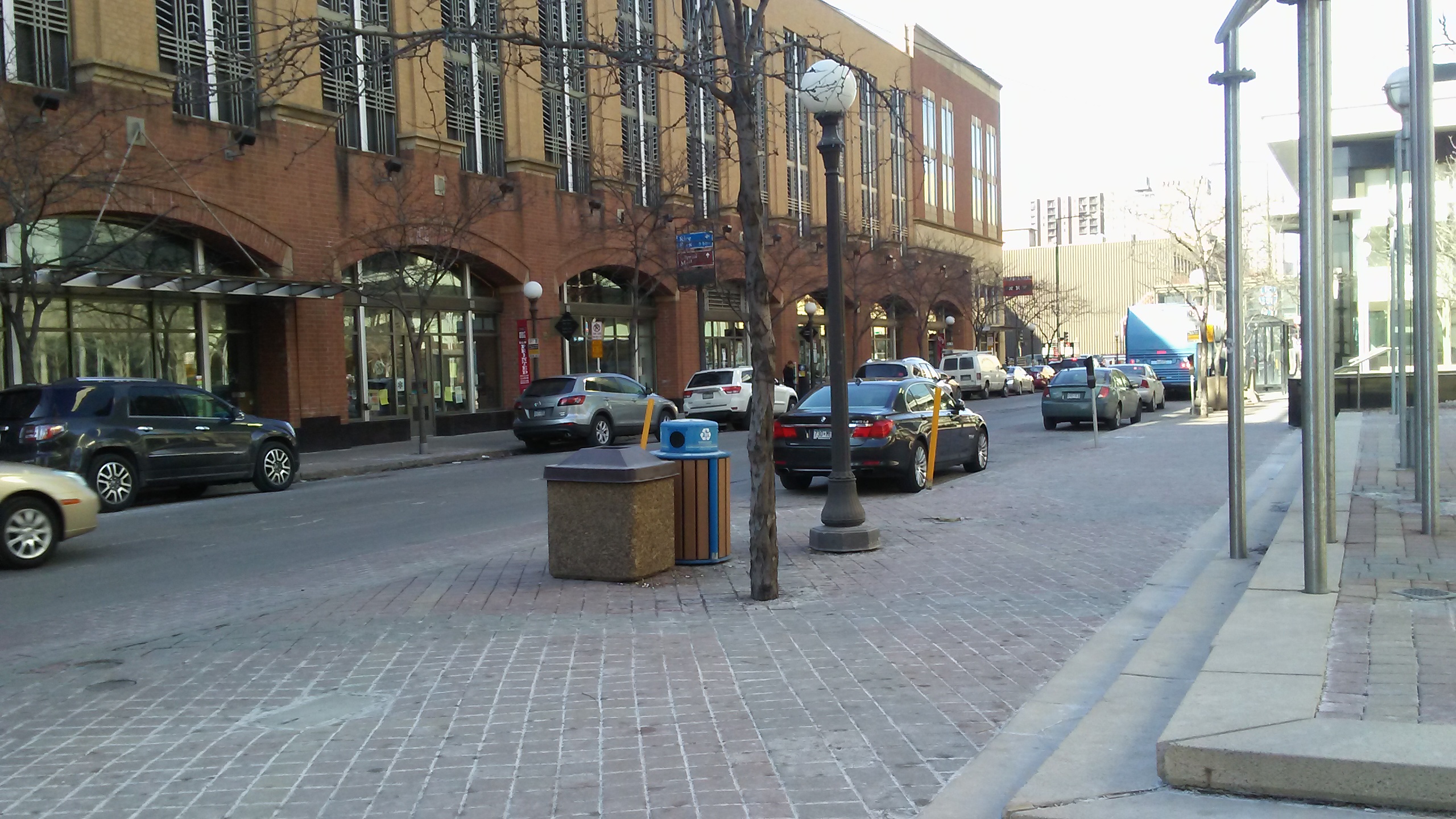
Today, in our adventure through Denver, we find ourselves trudging around behind a Walmart.
So far, we’ve seen a Gameworks on its last legs, a fantastic rhythm game arcade, and the greatest barcade ever. Between those and a few other oddities we’d be visiting later, Hyperspace Arcade wasn’t one that was very high on my excitement list. It seemed alright from the pictures I could find, but modern 80s arcades are a dime a dozen. I hadn’t bothered to make the walk down to Hyperspace until today, even though it was close to where I was staying.

As you can see, this is one of those side roads that’s mostly auto garages, tattoo parlors, and other such places. There’s no way in hell you’d be able to find this arcade unless you already knew where to look for it. Hell, if you only glanced at the above photo, you might have mistaken this for an unrelated establishing shot. It’s incredibly difficult to find.

Like I mentioned earlier, I didn’t have very high expectations going into Hyperspace arcade. My first impression of their arcade was the FAQ on their website:

I couldn’t help but get the impression that the arcade was smug, right off the bat. That already soured my opinion of the arcade a bit, but I decided to keep an open mind and pay it a visit anyway.

If you go around to the side, you see Pac-man leading you to the door. That immediately canceled out my negative first impression. Starcade’s location has two inherent problems: It’s hard to find the door and the building is drab. Putting this on the sidewalk outside not only makes the main entrance easier to find, but it also creates a fun first impression for visitors.
Not every arcade can be blessed with a perfect location, but I can’t hate an arcade that understands the strengths and weaknesses of its building and works within them.

Except Pac-man leads you to a door with “Please use other door” printed on the front. I’ll give them the benefit of the doubt and assume this was the main entrance when Pac-man was added to the sidewalk.

As soon as you walk in, there’s a small area with the bathrooms and a whole lot of CRT TVs. That would be a recurring theme for the rest of the arcade.
The TVs. Not the bathrooms.

I can only describe Hyperspace Arcade as “an arcade version of a dive bar.” Don’t get me wrong; it wasn’t a barcade. It just had a very dark and rebellious atmosphere.
If you’ve been reading this blog for a while, you know that also means my photos will be terrible. It’s hard to take photos of so many bright machines in a dark room.

Hyperspace Arcade cost me 15 dollars to enter for all-day play. It would be the second of many pay-at-the-door arcades I’d visit in Denver. They also functioned as a used video game store, I guess? This case was their entire stock.

They were also a console gaming lounge of sorts, sort of like Game Nest in Las Vegas. You can see the cement floor in all its glory here. I can’t emphasize enough just how dark and slummy this arcade was. If you’re dealing with a location like this, you either have to embrace it or do your best to counteract it. I think Hyperspace pulled off the former quite well, wouldn’t you?

To this day, I’m certain if the CRT TVs were purely decoration or if they used them for parts to fix the arcade games. But there were a LOT of CRT TVs.
But enough stalling. Let’s see what you actually came here for. How were the arcade games?

Oh, dear god. It was massive. I counted the games on their website afterward, and there were well over a hundred. It was like a mini-Galloping Ghost in here. And it was even bigger before they started downsizing. Even as a cynic who’s been to so many arcades that I’m pretty unphased by most of them, I was awestruck by its size. And not just the size, the selection, which skewed mainly toward 80s games, was full of unconventional picks. Not even Galloping Ghost had a lot of this stuff. My god, why does Denver have so damn many great arcades?
And now for the bad news: Hyperspace Arcade shut down three months after my visit.
It wasn’t even related to the lockdowns, like most of the other arcades that have shut down. It was just because they weren’t getting enough customers (although 2020 certainly would have killed them either way). Is it because they’re hidden in the middle of nowhere? Is it because arcades themselves aren’t profitable? No, I think there’s a more obvious for it. I’ll share why I believe they shut down after giving a tour of this once-great arcade. But before that, I will pay my final respects to this arcade in the same way I always do. I will preserve this arcade, exactly as I saw it on that day.

Let’s begin here, shall we? When you first walk in, just past the console area is the first of the two rooms. I tried to get a shot portraying just how big Hyperspace Arcade was. Do you see how the room splits into a bigger room after the third blacklight on the ceiling? That bigger room is the previous photo. There’s absolutely no way to capture the entire arcade in one shot. Even half of this smaller room is out of frame. I’d say there are around 30 games in this room alone.

We’re starting with two machines immediately behind me when I took that establishing shot. The game on the left is a vertical shoot-em-up called Alcon (Slap Fight in Japan) that I spent a lot of time on. It’s essentially a vertical Gradius clone with the same upgrade system. The main “gimmick” here is that the upgrades increase your wing size, turning you into a gigantic target if you get too many. There’s a pretty standard feature in shoot-em-ups called a “rank system” where the game gets harder as you get more powerups, but this is an unorthodox way of doing it (a few other games like Raiden also increase your hitbox slightly as you get more weapons, but this is the only one I know of that does it to such a ridiculous extreme).
The other one is a game called Blockout. It’s basically 3D Tetris, except you’re looking at the field downward from above and need to match the blocks in a flat square to clear them. It took me a while to remember what this game reminded me of. Think of it like Tetris 3D for the Virtual Boy.

I even got a screenshot of it! The machines seemed to be reset daily and I was the first person here, so I got a lot of very hollow high scores.

Moving slightly to the right is RipOff, the first co-op video game, and Solar Fox, which can only be described as “Pac-man without the maze.” I admit my knowledge of 80s arcade games is lacking, and I had nothing better to do today, so I played them all. That’s right; I played EVERY arcade game in the building. All 100+ of them. Many of them, like Solar Fox, I had to look up on Youtube to refresh my memory because they didn’t stand out much. I played Solar Fox at 2D Con last year, and I STILL had to look it up. That’s how forgettable it is.
Oh, and Silver Tee’s back there. Let me rephrase my last comment: “I played every arcade game in the building except Silver Tee.”

Here’s another game I needed a refresher on, Stocker. Unlike Solar Fox, I remembered it immediately after seeing a few seconds of footage. It’s a fairly ambitious top-down driving game where you drive cross-country on pre-set maps while avoiding the cops, stopping for gas, and generally just trying to make it to the end. I’d have probably played a lot of this one, except it’s a mid-80s top-down driving game, so the controls aren’t exactly great. Think “Super Off-Road if the road were made of butter.”

Midway’s Terminator 2: Judgement Day Arcade, with a stand-up from the movie for emphasis. I normally get killed pretty quickly in this game, so being able to play it on freeplay for the first time finally allowed me to get into the meat of the game. I have to say; I have no idea why this one’s so well-regarded. It’s a goddamn slog to get through. Looking at a random playthrough, it takes six minutes to clear the first level, with the boss alone being a minute and a half. And the level is repetitive as all hell. I don’t like this game at all.

This one is Space Gun, a light gun shooter from the early 90s. Light gun games lend themselves to 3D models, or at least digitized sprites, so fully sprite-based light gun games were fairly uncommon. And a lot of them were violent as all hell, like Space Gun. It’s pretty amusing in a game with such limited memory because there are certain enemies whose arms you can shoot off, like in House of the Dead. Whenever you shoot one off, you get the same sprite of alien intestines flying out as when you kill the main body.

Here we have three more games. The one on the left is called Reactor, best remembered as the first arcade game to credit the programmer on the title screen. Developers at the time were always at war with their companies over wanting credit for their jobs. The first Easter Egg in video game history came from an Atari 2600 programmer who wanted to sneak his name into the game.
Speaking for firsts, that game on the right is Pheonix, the first video game to have a boss fight. You can even see the boss on-screen in this photo! I researched the term “boss” to see where it came from a while back. The first printed use was a video game magazine in the early 80s, but the term wasn’t widely recognized back then (arcade fliers would refer to them as “gigantic enemies” well into the late 80s). As far as I can tell, it was Nintendo Power, of all things, that ended up making it a household term.
The middle game is Ataxx, a pretty standard Othello-style board game. I played it quite a bit while I was here, but there’s absolutely nothing to say about it. It’s just a board game.

I don’t think any of these were working. If they were, they just had something standard like Donkey Kong.
I think I’ll take this opportunity to mention the pinball machines. Black Pyramid and Bride of Pinbot, I think? Either way, those were the only two. I hear that there used to be a lot more, and the pinball fans weren’t happy that they were the first thing downsized. Damn things cost a lot to maintain and take up a huge amount of space, so I can’t blame them.

Until now, every machine we’ve looked at has been in the first room. You have to remember that I’m writing this nearly a year after I visited the arcade, so my memory gets fuzzy from this point forward. We’re just going to be bouncing around from this point forward. I like this photo because it’s the closest I got to capturing just how massive the arcade was.

I also need to say something up-front: The back room was way darker than the front one. There are a few machines where the marquee is hard to make out. In these arcades, I normally take a photo specifically of the marquee for personal reference, but since every game was listed on their website, I thought I could use that to jog my memory. But they took the whole website down when they closed, so I’m just out of luck. Nobody’s forcing me to talk about EVERY machine here, but I try to show as many as I can for archival, you know? I’ll try to identify as many of them as possible, but no promises.
This one is Badlands. It’s Super Sprint with weapons.

The first Virtual-on machine in Denver! These are normally uncommon to run into, but Denver had quite a few for whatever reason. This single-handedly spawned the “over the shoulder” style of fighting game that’s still used today in games like School of Ragnarok or most licensed anime fighting games. Of course, none try to recreate Virtual-on’s unique twin-stick control style.
…except that one Gundam game, I guess.

These two behemoths here are a game known as T-mek. It’s a futuristic tank game that plays like a super-90s version of Battlezone. It’s even got a Doom announcer yelling things like “excellent!” every time you kill someone.

T-mek has an unorthodox control setup where the joysticks are down by your knees, making it feel like you’re playing Rolling Extreme (which you’ve probably never heard of, either). This game was popular with the other people here, to the point where they had a full 4-player setup going (two of which were broken at the time). Put a bookmark in this; I’ll get back to it during my wrap-up.

Okay, so you remember T-mek and Virtual-on, right? This is Namco’s Cyber Sled, a game that predates both, but both are highly derivative of. It’s a very, very fast-paced one on one tank battle game. Well, faster than you’d expect a game about tanks to be, anyway. Those are some of the most agile tanks I’ve ever seen.

Mappy is on the left. Road Runner is on the right. I saw Road Runner at Galloping Ghost a few years back, but Tom was rushing me through the place, so I didn’t have time to play a lot of the games. That’s why I made it a point to play EVERY game here since I had all day. I was surprised by how fun it was.

Indiana Jones and the Temple of Doom is just as bad as I remember it being in New York, though.

But here are the real treats. Darius and The Ninja Warriors. Yeah, from this photo, it may not be obvious what’s cool about these. Let’s take a closer look.

Both games use a very unusual three-monitor setup to have a SUPER widescreen. This one is The Ninja Warriors, which wasn’t great from what little I played of it.

On the other hand, this one is the legendary shoot-em-up Darius (it has nothing to do with Gradius). This game is well-known among shoot-em-up enthusiasts for its branching, gorgeously haunting aesthetics. It’s set in space, but all the stages make you feel like you are flying through an underwater cavern. It also takes advantage of the gigantic display with absolutely massive bosses; all alien takes on aquatic life. If, by some miracle, you even run into one of these machines, do yourself a favor and play it. Don’t worry; this isn’t the only arcade in the country that has it. This game has enough notoriety that a few big arcades are competing for “second best arcade in the country” after Galloping Ghost has it (as well as Galloping Ghost themselves). Hyperspace Arcade was one of those that wanted to compete with Game Galaxy and Grinkers for that title. It didn’t work out, though.
EDIT: RIP Grinkers.

Tutankham is an interesting game. Back in the 80s, it was considered one of the “core” arcade games, alongside the ranks of things like Defender and Centipede. While many of the other A-list games from that period are still household names today, this one’s fallen into relative obscurity.

Normally two player cocktail machines have the players sitting on opposite sides of the table. Playing a game like Joust sideways would be a bit disorienting, wouldn’t it?

This is Qix, a game you’ve probably played on a calculator at some point and didn’t know the name of.

This is Klax, a 3D-ish, puzzle-ish game. The home port’s box art is just a neon pink hand against a late 80s/early 90s black background. It will never leave your mind once you see it.
https://images.launchbox-app.com/26578eaa-5e0f-4dd4-b60f-217aae12c125.png
This is Kwirk, a very underrated Gameboy puzzle game. I played it in Funcoland once as a small kid.
So you’ve got these three games with similar-sounding nonsense names: Qix, Klax, and Kwirk. For the longest time, I could never remember which was which.

Hyperspace Arcade had the first four Galaga games, including the lesser-known Galaga ’88. I’m a fan of Gaplus, but this one was neat. I liked the backdrops.

Oh, Pac-man Plus! It’s the first time I’ve seen one of these in person. Back in the 80s, people were getting too good at Pac-man, so they made an “update” that throws a bunch of bullshit at the player, like the maze turning invisible, to stop people from sitting on the machine for half an hour. This game has mostly been buried by Namco but does occasionally pop up on compilations. Just not often.

When I was writing about Galaga 88, I was about to mention the cool 3D meteor effect, but then I realized there wasn’t one. I thought I was going crazy, but it turns out I was confusing it with Asteroids Deluxe here. In my defense, the two machines were positioned similarly in the arcade.

As you can see, it’s still got the simple vector graphics of Asteroids but with a glowing 3D background art that the game plays in front of. I’m honestly amazed it photographed so well. It’s a REALLY cool-looking game.

They had two Neogeo machines, and I don’t seem to have gotten the listing of the other one (I know the first Samurai Shodown was on it with a few other fighting games). This is the machine where they kept some of the games you don’t see very often. The NeoGeo is mostly remembered for its fighting games, puzzle games, and Metal Slug, but it did have other genres. Magician Lord and Blue’s Journey are rare examples of arcade platformers, Viewport is a shoot-em-up, and Sengoku is a Japanese-themed beat-em-up. Magician Lord, in particular, is often considered one of the best games on the hardware.

Hyperspace Arcade had very, very few fighting games in its collection. Of all the games they DID have, I can’t believe Time Killers made the cut. It’s just a very, very violent Mortal Kombat clone whose gimmick is that you can slice body parts off your opponent to limit their actions in combat. The controls in this game were awful.

I played the hell out of the game on the right but couldn’t remember the name of it. After some digging, I found it’s (ironically) titled “Forgotten Worlds.” While in Denver, I played all sorts of Shoot-em-ups I’d never even heard of before. It led to me getting more interested in the genre and learning many things I didn’t know before. Now I feel stupid for brushing off the Raiden DX machine at 2D Con last year without realizing what it was.
(Looking through my photos, I realize I took a close-up picture of Forgotten Worlds’ title screen so I wouldn’t forget the title. Now I feel even stupider)

The only light gun game and it was Star Trek Voyager.
Anyhow, our time in Hyperspace Arcade is drawing to a close, so I’ll write my final thoughts on it here. I’ve shown off most of the more interesting machines. I’ve since found out their website is archived, so you can see a list of the ones I didn’t cover. Note that that list doesn’t quite sync up with when I was here, but it’s similar enough. I did take photos of most of the other machines, but I feel like I’ve captured the essence of the arcade already and don’t have much to say about the other games.
Now, why did Hyperspace Arcade shut down? I can only speak for my time here since I know it was MUCH bigger just a year earlier, but I have a pretty good idea. They said that their biggest problem is that people come to the arcade once, then never come back a second time. My theory is that it has to do with the choice of games. Specifically, how few games with simultaneous multiplayer there were. Hyperspace Arcade isn’t the kind of place you’d go to hang out with friends. There’s a reason so many modern arcades tend to rely heavily on 4-player beat-em-ups and games like that four-player Pac-man. The worst part is that the arcade treats itself as a social spot, with live DJs on the last Friday of every month, but the list of games doesn’t mesh with the community they were trying to form. The strange location didn’t help, either.
But that’s just my theory. Either way, I’m really glad I got to see it. It wasn’t perfect, but I remember those six hours I spent at Hyperspace fondly. I do wish I could have seen it in its prime.

On the way back, I needed to find food. Luckily, there happened to be a local 5 dollar pizza place just down the street from where I was staying.

The best way I can describe this pizza is “Little Ceasers with more flavor”. I’d end up coming back here nearly every day for the rest of my trip.
And thank god I finally got this blog post done. It was one of the biggest arcades I saw in Denver and I really wanted to do it justice since it’s no longer around. Hopefully, the rest of the Denver posts will be much less of a pain to write. Well, onto the next.

